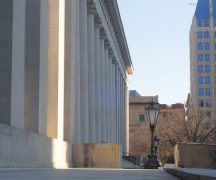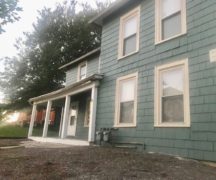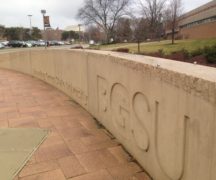By DAVID DUPONT
BG Independent News
The pandemic is taking a financial toll on the Wood County District Library.
Library Director Michael Penrod told the trustees Thursday that the decline in state funding is already being felt. April’s Public Library Fund check was down 10.5 percent, and May’s was down 34.5 percent. The fund gets its money as a percentage of the revenue being collected by the state, and as soon as those sales, income and commercial activity taxes decline, the amount distributed to the state’s libraries declines.
In the budget approved on March 14, the library was expecting to bring in $1.5 million from the fund, about half its total revenues. That was the same day, Penrod noted, that the trustees voted to close the library in response of the coronavirus pandemic. The budget’s projections didn’t even last a day.
The Ohio Library Council advises the library fund checks may bump up a little because of the delayed collections in income tax, he said. And sales taxes may go up as the economy opens up, but how much is uncertain.
The library was forced to lay off part-time employees earlier this month. That reduced the budget by $126,750.
Penrod and Linda Joseph, the library’s fiscal officer, looked at other reductions – the materials budget went down 13 percent, the technology budget was cut 13 percent.
The library had to spend more money in other areas. The supply budget, a comparatively small item, was up 40 percent from the $37,000 budgeted.
Penrod is backing away from some capital expenditures. The library’s lighting system is “woefully out of date.” He’d received the contract for the $30,000 repair in early March, but hadn’t signed it when the library closed.
That work will be put on hold, but Penrod said he needs to hold onto the $30,000 in case the system fails. If it does it’ll have to be repaired immediately.
A power washer used to clean the rest rooms broke down, and the purchase of a replacement couldn’t be put off.
The library is spending money on masks, cleaning materials, and other supplies needed to meet the new requirements that will allow it to open to the public.
In two years, the library is facing a $170,000 project to replace the heating plant. “Right now, it’s just wait and see.”
Penrod said over the past four years or so, state library funding had stabilized, after it nose-dived during the Great Recession. For years after that it fluctuated greatly.
But funding had recovered and had modestly increased.
“Now the rug was just pulled out from under us.” Penrod just hopes it doesn’t take a better part of a decade for it balance out.
Another element of instability is the prospect of several properties leaving the Bowling Green City School District and joining neighboring districts.
That would reduce the revenue brought in by the 0.8 mill levy by 3 percent, or about $32,000. The levy is projected to bring in $1,059,000. That five-year levy will be on the November ballot for renewal.
Penrod noted that those taxpayers who would join the Elmwood or Otsego district if voters approve the transfers would pay 1 mill for libraries. Also, even if those properties were moved, the property owners would still be responsible to pay on the 25-year bond issue passed in 2001 for the $5 million used to renovate and expand the downtown Bowling Green library.
In his discussions with Joseph, Penrod said they contemplated the possibility of revenues down $360,000. Penrod said he’s put together a tentative list of about $400,000 in savings. He said he would formalize it and present it to the trustees in June.





